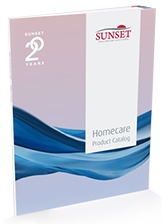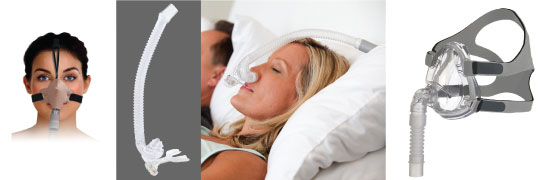
Emerging technologies and lower cost alternatives present new opportunities.
With competitive bidding looming on the horizon, and reimbursements potentially being cut by 40-50 percent, many HME providers are looking for lower cost alternatives to save their profit margins. We at Sunset Healthcare Solutions sell masks from nearly every manufacturer, so we’re often asked about sales trends in the respiratory industry. Recently we have seen a spike in lower-cost masks, as providers are looking to turn away from masks that carry a hefty price tag. Also, masks that fit a unique niche in the marketplace are doing well, since HMEs want to stand out from their competition and explore alternatives that fit the specific needs of their clients. In this article we’ll explore some of the options available and what you should look for when selecting masks.
In terms of selecting a brand, we have found that while sleep doctors or labs might be partial to a certain brand because they like the sales rep who visits their office every week, studies have shown that end-users do not tend to have the same brand recognition for their mask. In fact, many PAP patients don’t even know the name of the mask they are using. Often patients are open to trying a new mask as long as it’s comfortable and works for them. So if you have doctors or labs who do not prescribe a certain brand of mask, you have the freedom to find alternatives that fit the needs of your patient while also saving you money. There are many types of masks in the market such as InnoMed, RespCare, Sunset, SleepWeaver or the new Tap-Pap mask that are lower cost than the traditional name brand manufacturers.
Above all, your masks need to work for your patient, so ask them what they are looking for and try to find a mask that fits those needs. For some clients, a lightweight mask might be the most important requirement, while others might prefer one that reduces red marks or eases their claustrophobia symptoms. Once you find out what your patients are looking for, do some research into alternatives to masks you currently buy:
• Go online to review websites like cpap.com or cpaphelpdesk.com to see what other patients are saying about the masks you are less familiar with.
• Ask manufacturers for samples to let your patients try them—many are happy to give customers a sample or free trial as a way to gain additional business.
• If you are not able to get a free sample, most manufacturers have a money back guarantee so if you or your clients are not satisfied with the masks, you can return them at no cost.
We have had particularly good feedback on the following masks that are all available at a price that allows profit after competitive bidding reimbursements go into effect:
Nasal Pillows
RespCare Aloha Mask: It’s gotten great reviews on cpap.com, is very lightweight, quiet and has fully adjustable pillows to get a good seal.
TAP-Pap: This mask is new to the market and is already one of the top selling nasal pillow masks. It has a mouthpiece to hold it in place, so it completely eliminates the need for headgear.
Breeze SleepGear: This classic mask has been around for a while and continues to be popular with nasal pillow users because it doesn’t have straps against the cheeks and has seven pillow sizes to fit everyone.
Nasal
Sunset Deluxe Nasal Mask: Sunset’s newest nasal mask is extremely lightweight and has a replacement cushion for added reimbursement.
SleepWeaver Advance and Élan: If you haven’t tried a cloth mask yet, we recommend it. The Advance mask is one of our top sellers and the newer Élan is not far behind.
Full Face
Sunset Full Face Mask: This popular mask is the one-piece design that has the same features as the older generation Probasics Zzz-Mask that many patients loved. Probasics has discontinued the mask but it’s still available through Sunset.
Fisher & Paykel Flexifit 431: This mask features much of the same technology of their newer Forma mask such as the glider strap and under chin design, but it’s an older generation so it comes at a lower price. As a bonus, they included all three size cushions in the same box so you only have to stock one model.
Sunset Deluxe Full Face Mask: Available this April, this new Deluxe Full Face mask is ultra-lightweight because they removed the T-bar forehead support. That also created a clear line of sight which is great for claustrophobic patients.
If you try a new mask and isn’t exactly right for your patient, give that feedback to the manufacturer. You would be surprised by how often those little tips can make a big difference. When Sunset launched their new Deluxe CPAP masks earlier this year, we listened to the feedback from several of our customers and added some additional features, like an extra swivel at the connection, which would make the mask more comfortable for active sleepers.
























